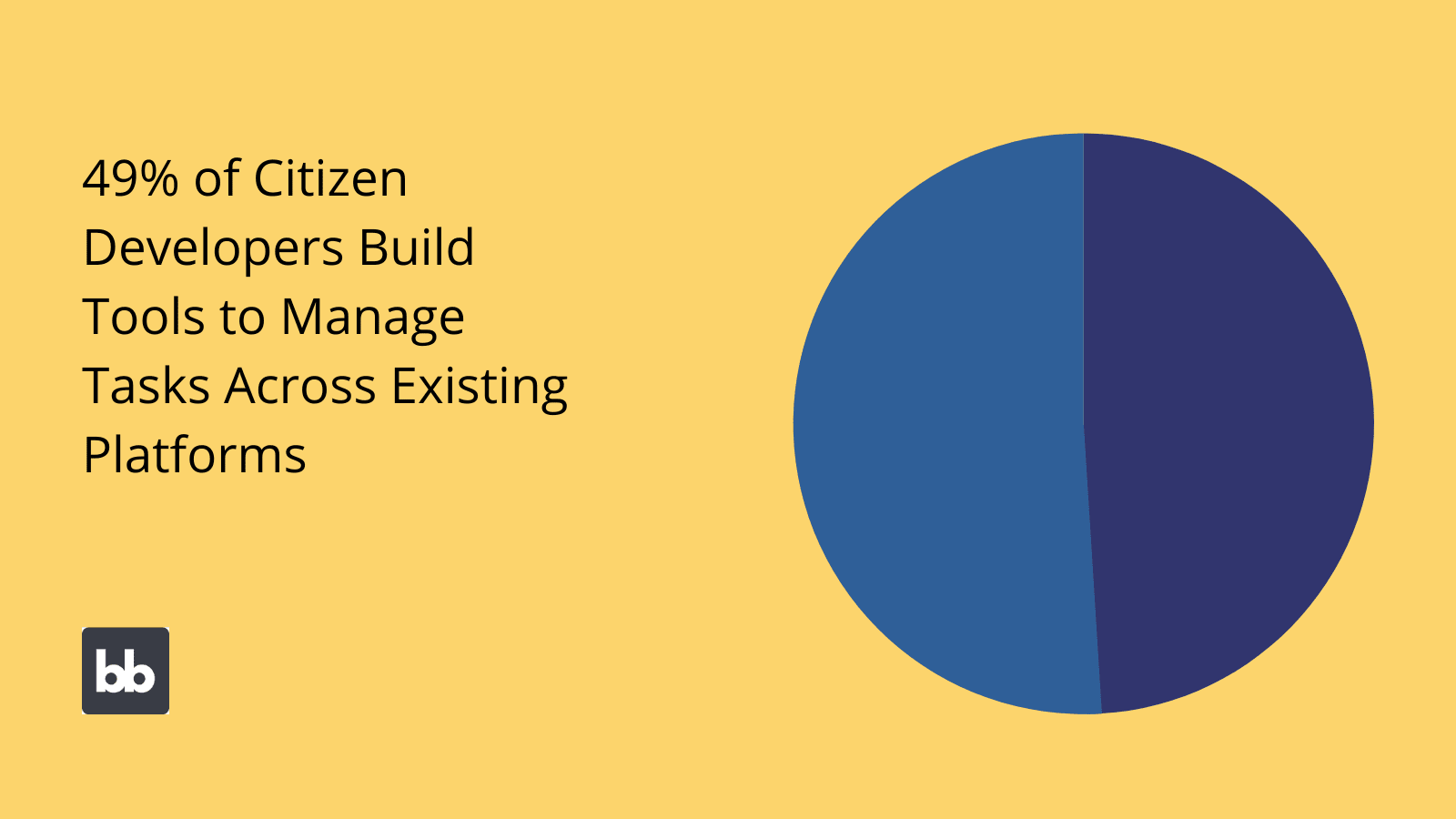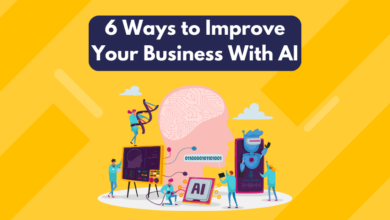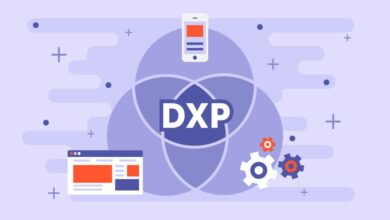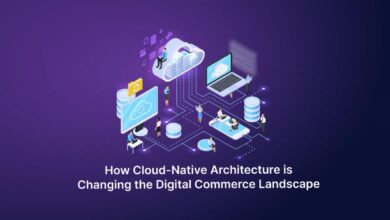
Embrace Control, Unleash Potential Keys to Citizen Developer Success
Embrace control unleash potential keys to a successful citizen developer culture – Embrace Control, Unleash Potential: Keys to a Successful Citizen Developer Culture – that’s the exciting challenge we’re tackling today. Imagine a world where employees, empowered with the right tools and guidance, can build the applications they need to streamline their work, boosting efficiency and innovation. This isn’t science fiction; it’s the reality of citizen development, a movement transforming how organizations operate.
But unlocking its full potential requires careful planning, robust governance, and a supportive culture. We’ll explore the strategies, best practices, and potential pitfalls to help you build a thriving citizen developer program.
This post delves into the crucial aspects of establishing a successful citizen development initiative. We’ll examine the definition and benefits of citizen development, comparing it to traditional software development. We’ll then dissect the importance of governance and security, outlining strategies for empowering citizen developers through training and collaboration. Finally, we’ll discuss measuring success, addressing common challenges, and leveraging the right tools and technologies.
Get ready to discover how to harness the power of your employees and build a more agile, innovative organization.
Defining Citizen Development
Citizen development is empowering business users, often lacking formal IT training, to build applications and automate processes using low-code/no-code platforms. This approach shifts the responsibility of application development beyond the traditional IT department, fostering a more agile and responsive organization. The core principles revolve around ease of use, rapid prototyping, iterative development, and close alignment with business needs.Citizen development offers significant advantages.
By enabling business users to directly create solutions, organizations experience faster application delivery, reduced IT backlogs, increased agility, and enhanced business process optimization. This empowers employees to solve their own problems, leading to increased efficiency and job satisfaction. Moreover, it fosters innovation by enabling experimentation with new ideas and technologies, ultimately driving better business outcomes.
Benefits of a Citizen Developer Culture
A successful citizen developer culture streamlines workflows and accelerates innovation. Business users can quickly address immediate needs without lengthy waits for IT resources, leading to faster time-to-market for new applications and solutions. This responsiveness improves customer satisfaction and supports quicker adaptation to changing market demands. Furthermore, the increased engagement and ownership among business users often results in higher quality applications that are better tailored to specific business needs.
Empowering citizen developers means giving them the right tools and the autonomy to build solutions. A key part of this is embracing flexible development platforms, and that’s where understanding the future of app development comes in. Check out this insightful piece on domino app dev the low code and pro code future to see how low-code/pro-code approaches can boost your citizen developer program.
Ultimately, controlled empowerment unlocks incredible potential within your organization.
Reduced IT backlogs allow IT professionals to focus on more complex and strategic initiatives, maximizing their expertise and improving overall organizational efficiency. Examples include a marketing team building a customized lead tracking system or a sales team creating a mobile app for managing client interactions. These projects, previously reliant on IT, are now quickly developed in-house.
Citizen Development versus Traditional Software Development
Citizen development differs significantly from traditional software development methodologies. Traditional methods often involve lengthy development cycles, complex coding, and significant IT involvement. This approach requires specialized skills and expertise, resulting in longer lead times and higher costs. In contrast, citizen development leverages low-code/no-code platforms, simplifying the development process and reducing the need for extensive programming knowledge. This allows for faster prototyping, quicker iterations, and more agile responses to evolving business needs.
The focus shifts from technical complexity to functional requirements, enabling faster deployment and reduced development costs. Consider a comparison between building a house (traditional development) requiring architects, engineers, and specialized contractors versus assembling pre-fabricated modules (citizen development) which requires less specialized skills and a faster assembly time.
Embrace Control
Citizen development offers incredible potential for boosting productivity and innovation, but unchecked growth can lead to chaos. A robust governance and security framework is crucial to harnessing the power of citizen developers while mitigating risks. This framework ensures alignment with organizational goals, protects sensitive data, and maintains a consistent level of quality across all citizen-developed applications. Ignoring these crucial aspects can result in security breaches, compliance violations, and a general lack of trust in the citizen development initiative.Establishing a comprehensive governance and security model isn’t about stifling creativity; it’s about empowering citizen developers with the tools and guidelines they need to succeed responsibly.
Think of it as providing a safety net, allowing them to explore and innovate within defined boundaries. This ensures the organization benefits from the speed and agility of citizen development while maintaining control and minimizing potential problems.
Governance Framework Best Practices
A well-defined governance framework is the cornerstone of a successful citizen development program. This framework should clearly Artikel roles, responsibilities, processes, and standards. Key components include a centralized platform for managing applications, a standardized development lifecycle, and a clear approval process for new applications. This ensures consistency, reduces duplication of effort, and allows for effective oversight. Furthermore, regular audits and reviews should be scheduled to ensure compliance and identify areas for improvement.
For example, a company might implement a tiered approval system where simple applications are approved by a team lead, while more complex applications require approval from IT security and compliance.
Security Model for Citizen-Developed Applications, Embrace control unleash potential keys to a successful citizen developer culture
Security is paramount in any citizen development initiative. A multi-layered security model should be implemented to mitigate various risks. This includes robust authentication and authorization mechanisms, data encryption both in transit and at rest, regular security testing and vulnerability assessments, and a comprehensive incident response plan. Furthermore, the security model should integrate seamlessly with the existing IT infrastructure, ensuring consistency and preventing security gaps.
For instance, a company might require all citizen-developed applications to integrate with the organization’s single sign-on (SSO) system and undergo penetration testing before deployment.
Implementing Robust Data Governance Policies
Data is the lifeblood of any organization, and its protection is crucial. Robust data governance policies are essential to ensure the responsible use and protection of data within a citizen development environment. These policies should clearly define data access rights, data quality standards, and data retention policies. They should also Artikel procedures for handling data breaches and ensuring compliance with relevant regulations, such as GDPR or CCPA.
A step-by-step implementation guide might include:
- Define data ownership and access rights: Clearly specify who owns and has access to different datasets.
- Establish data quality standards: Define rules for data accuracy, completeness, and consistency.
- Implement data encryption and access controls: Secure data both in transit and at rest.
- Develop data retention policies: Determine how long data is kept and how it is disposed of.
- Create a data breach response plan: Artikel steps to take in case of a data breach.
- Conduct regular data audits: Verify compliance with data governance policies.
Implementing these policies requires a combination of technical controls (like encryption and access controls) and procedural controls (like data access requests and approval processes). For example, a company might require all citizen developers to complete data privacy training before accessing sensitive data.
Unleash Potential
Empowering citizen developers is crucial for unlocking the full potential of low-code/no-code platforms. By providing the right skills and support, organizations can foster a culture of innovation where employees across departments can contribute to digital transformation. This involves a strategic approach to training, fostering collaboration, and establishing clear governance structures.Successful citizen development initiatives require a multifaceted approach that extends beyond simply providing access to low-code/no-code tools.
It necessitates a commitment to ongoing training, mentorship, and the establishment of robust support systems. Ignoring these crucial aspects can lead to poorly designed applications, security vulnerabilities, and ultimately, a decrease in efficiency.
Key Skills and Training for Citizen Developers
Effective citizen development relies on equipping individuals with the necessary skills and knowledge. This goes beyond technical proficiency and encompasses broader competencies in problem-solving, collaboration, and communication. A comprehensive training program should address these areas to ensure the success of citizen development initiatives.
- Low-code/no-code platform proficiency: Training should focus on the specific platform adopted by the organization, covering its features, functionalities, and best practices. This includes hands-on exercises and practical application scenarios.
- Data security and governance: Citizen developers need to understand data privacy regulations and security best practices to prevent vulnerabilities. Training should cover data handling, access control, and compliance requirements.
- Application design principles: Understanding user experience (UX) and user interface (UI) principles is crucial for creating effective applications. Training should include lessons on designing intuitive and user-friendly interfaces.
- Problem-solving and analytical skills: Citizen developers need to be able to identify problems, analyze data, and develop effective solutions. Training can incorporate case studies and practical exercises to develop these skills.
- Collaboration and communication: Effective citizen development requires collaboration with IT professionals and other stakeholders. Training should focus on communication techniques, teamwork, and conflict resolution.
Examples of Successful Citizen Development Programs
Several organizations have successfully implemented citizen development programs, resulting in significant improvements in efficiency and innovation. These examples demonstrate the positive impact of empowering employees to build applications.
- A large financial institution leveraged citizen development to automate manual processes, reducing processing times by 50% and freeing up employees for more strategic tasks. They implemented a comprehensive training program covering data security, application design, and the specific low-code platform they adopted. The program also included mentorship opportunities with experienced developers.
- A global retailer used citizen development to create custom applications for inventory management and customer service, resulting in a 20% increase in sales efficiency. Their program focused on equipping employees with the skills to design and build simple yet effective applications tailored to their specific needs. This reduced the burden on the IT department, allowing them to focus on more complex projects.
A Comprehensive Training Curriculum for Citizen Developers
A well-structured training curriculum is essential for fostering a successful citizen development program. The curriculum should be modular and adaptable to different skill levels and roles.
- Module 1: Introduction to Citizen Development and Low-Code/No-Code Platforms. This module introduces the concept of citizen development, its benefits, and the chosen low-code/no-code platform. It covers basic navigation, data modeling, and simple application building.
- Module 2: Application Design Principles and User Experience (UX). This module focuses on designing user-friendly applications, covering principles of UX design, UI best practices, and accessibility considerations.
- Module 3: Data Security and Governance. This module covers data privacy regulations, security best practices, and data handling procedures. It emphasizes the importance of secure application development and compliance with organizational policies.
- Module 4: Advanced Features and Integrations. This module delves into more advanced features of the low-code/no-code platform, such as integrations with other systems and APIs. It also covers techniques for optimizing application performance and scalability.
- Module 5: Deployment, Maintenance, and Support. This module covers the process of deploying applications, monitoring their performance, and providing ongoing support. It also includes strategies for managing application updates and resolving issues.
Successful Citizen Developer Culture
Building a thriving citizen developer program isn’t just about providing the right tools and training; it’s about fostering a collaborative environment where citizen developers and IT professionals work together seamlessly. A successful culture emphasizes knowledge sharing, mutual respect, and a shared understanding of goals. This collaborative approach unlocks the full potential of citizen development, leading to faster innovation and more efficient processes.
Strategies for Fostering Collaboration Between Citizen Developers and IT Professionals
Effective collaboration requires a structured approach. Clear communication channels, well-defined roles, and regular interaction are crucial. IT professionals can act as mentors and guides, providing expertise on security, scalability, and integration with existing systems. Citizen developers, in turn, bring their domain expertise and fresh perspectives, accelerating the development process and identifying innovative solutions. A successful partnership relies on mutual trust and respect, with both groups understanding and valuing each other’s contributions.
Regular joint workshops, cross-training sessions, and informal networking opportunities can help build strong working relationships.
A Communication Plan for Seamless Knowledge Sharing and Feedback Loops
A robust communication plan is essential for a successful citizen developer program. This plan should include multiple channels to accommodate different communication styles and preferences. For instance, a dedicated online forum or collaboration platform can facilitate ongoing discussions, knowledge sharing, and the quick resolution of issues. Regular town hall meetings or webinars can provide updates on program progress, best practices, and upcoming initiatives.
Furthermore, a structured feedback mechanism, such as regular surveys or one-on-one meetings, ensures that the program remains responsive to the needs of its participants and continuously improves. This two-way communication helps identify challenges early and allows for adjustments to ensure everyone stays informed and engaged.
A System for Recognizing and Rewarding Contributions from Citizen Developers
Recognizing and rewarding citizen developers’ contributions is vital for maintaining motivation and engagement. A formal system for acknowledging achievements helps foster a sense of community and encourages continued participation. This could involve a points-based system where developers earn points for completing projects, contributing to the community forum, or mentoring others. Points can then be redeemed for rewards, such as gift cards, extra training opportunities, or public recognition during company events.
Alternatively, a peer-to-peer recognition system, where individuals can nominate and praise their colleagues, can build morale and create a culture of appreciation. Public acknowledgment of successful projects and outstanding contributions, such as showcasing them in company newsletters or internal presentations, reinforces the value of citizen development within the organization.
Measuring Success

Successfully implementing a citizen development initiative requires a robust mechanism for tracking progress and demonstrating value. Without clear metrics, it’s impossible to understand whether the program is achieving its goals, identify areas for improvement, and justify continued investment. Therefore, defining and monitoring Key Performance Indicators (KPIs) is crucial for the long-term health and success of any citizen development program.Measuring the impact of citizen development goes beyond simply counting the number of apps built.
It requires a holistic approach that considers business outcomes, user experience, and the efficiency of the development process itself. By carefully selecting and tracking relevant KPIs, organizations can gain valuable insights into the effectiveness of their citizen development program and make data-driven decisions to optimize its performance.
Key Performance Indicators for Citizen Development
Several key metrics can effectively gauge the success of a citizen development initiative. These KPIs should align with the overall business objectives and provide a comprehensive view of the program’s impact. Choosing the right KPIs depends heavily on the specific goals of the program and the organizational context.
KPI Tracking and Analysis
Tracking KPIs requires a systematic approach. Data should be collected regularly from various sources, including the citizen development platform, user feedback surveys, and business performance reports. This data needs to be analyzed to identify trends, pinpoint areas of strength and weakness, and measure the impact of changes made to the program. For example, a decrease in the average time to resolve an issue might indicate the effectiveness of a newly developed citizen-developed application.
Conversely, a high number of abandoned applications might suggest a need for improved training or platform support. Analyzing the correlation between different KPIs is also vital. For example, analyzing the relationship between application usage and business process efficiency can provide valuable insights into the program’s overall impact.
Data Visualization: Presenting KPI Findings
Effective data visualization is key to communicating the success of a citizen development program to stakeholders. A well-designed dashboard can quickly convey key insights and facilitate informed decision-making. Below is an example of a table that could be used to present KPI data. Note that this is just a sample; the specific KPIs and data will vary depending on the organization and its specific goals.
| KPI | Target | Actual | Variance |
|---|---|---|---|
| Number of Applications Deployed | 50 | 62 | +12 (24%) |
| Average Development Time (days) | 15 | 12 | -3 (-20%) |
| User Satisfaction Score (1-10) | 8 | 8.5 | +0.5 (+6.25%) |
| Cost Savings (USD) | $50,000 | $65,000 | +$15,000 (+30%) |
Addressing Challenges
Citizen development, while offering immense potential, isn’t without its hurdles. Successfully implementing a citizen development program requires proactive planning and a robust strategy to address common challenges that can derail progress and undermine its value. Ignoring these challenges can lead to wasted resources, security vulnerabilities, and ultimately, the failure of the initiative.Successfully navigating these challenges requires a multi-faceted approach, encompassing proactive risk management, comprehensive training, and a culture of continuous improvement.
By anticipating potential problems and implementing mitigation strategies, organizations can maximize the benefits of citizen development while minimizing the risks.
Data Governance and Security
Maintaining data governance and security is paramount in any citizen development initiative. Uncontrolled access to sensitive data can lead to breaches, compliance violations, and reputational damage. Strategies to address this include implementing robust access control mechanisms, enforcing data encryption, and providing comprehensive data governance training for citizen developers. For instance, organizations can leverage role-based access control (RBAC) to restrict access to sensitive data based on an individual’s role and responsibilities.
Furthermore, regular security audits and penetration testing can help identify and address vulnerabilities before they are exploited.
Shadow IT and Lack of Standardization
The decentralized nature of citizen development can lead to the proliferation of shadow IT – applications and systems developed outside of the IT department’s oversight. This lack of standardization can create integration challenges, security risks, and difficulties in maintaining consistency across the organization. To counter this, organizations should establish clear guidelines and governance frameworks for citizen development, including approved tools, development methodologies, and security protocols.
A central repository for all citizen-developed applications can improve visibility and control. Implementing a standardized development lifecycle, similar to professional software development, ensures quality and consistency.
Resistance to Change and Lack of Adoption
Overcoming resistance to change and encouraging adoption requires a multifaceted approach. This includes providing comprehensive training and support, clearly communicating the benefits of citizen development, and fostering a culture of collaboration between citizen developers and the IT department. Success stories and testimonials from early adopters can help build momentum and encourage wider participation. Addressing concerns regarding job security and skill obsolescence is crucial for gaining buy-in from employees.
For example, showcasing how citizen development empowers employees to solve problems more efficiently and focus on higher-value tasks can alleviate fears.
Lack of Skills and Training
Citizen developers often lack formal software development training. Bridging this skills gap requires investing in comprehensive training programs tailored to the specific needs of citizen developers. These programs should cover topics such as low-code/no-code platform usage, best practices for application development, and data governance and security. Providing ongoing mentorship and support can help citizen developers improve their skills and confidence.
For example, pairing experienced developers with citizen developers for collaborative projects can facilitate knowledge transfer and improve the quality of citizen-developed applications. Regular workshops and online learning resources can supplement formal training.
Measuring and Monitoring Success
Defining clear metrics for measuring the success of a citizen development program is essential for demonstrating its value and making data-driven improvements. These metrics should align with business objectives and track key performance indicators such as application development time, cost savings, user adoption rates, and the impact on business processes. Regular monitoring and reporting can help identify areas for improvement and ensure that the program is delivering on its intended outcomes.
For instance, tracking the number of applications developed, the time saved through automation, and the reduction in IT backlog can demonstrate the program’s effectiveness. Using dashboards to visualize key metrics makes it easier to track progress and identify trends.
Tools and Technologies

Citizen development thrives on the availability of powerful yet accessible tools. Low-code/no-code platforms are the engines driving this revolution, empowering individuals with limited coding experience to build sophisticated applications. Understanding these platforms and their capabilities is crucial for fostering a successful citizen developer culture.Low-code/no-code platforms offer a visual, drag-and-drop interface, significantly reducing the reliance on traditional coding. This allows citizen developers to focus on business logic and problem-solving rather than getting bogged down in complex syntax.
The benefits extend beyond ease of use; these platforms often incorporate features for enhanced security, scalability, and integration with existing systems, addressing concerns that traditionally hinder application development.
Popular Low-Code/No-Code Platforms
Several platforms dominate the low-code/no-code landscape, each with its strengths and weaknesses. The choice of platform often depends on specific needs, existing infrastructure, and the technical skills of the citizen developers.
- Mendix: Known for its strong enterprise-grade features, including robust security, scalability, and integration capabilities. It’s a suitable choice for complex applications requiring high performance and reliability. Mendix excels in providing a comprehensive development environment with features like version control and collaborative workflows.
- OutSystems: Another enterprise-focused platform, OutSystems provides a high level of abstraction, allowing developers to build applications quickly. It features AI-assisted development capabilities and strong support for mobile applications.
- Microsoft Power Platform: This suite of tools, including Power Apps, Power Automate, and Power BI, provides a comprehensive ecosystem for citizen development. It seamlessly integrates with other Microsoft products, making it attractive to organizations already invested in the Microsoft ecosystem. Its ease of use and broad range of functionalities make it accessible to a wider range of users.
- Appian: Appian emphasizes process automation and business process management (BPM). It’s a good choice for organizations seeking to streamline workflows and improve operational efficiency. It features advanced features for managing complex business processes and integrations.
Comparison of Low-Code/No-Code Platforms
Choosing the right platform involves considering factors such as scalability, integration capabilities, security features, and the level of technical expertise required. While all platforms aim for ease of use, the complexity of applications they can handle varies. For example, Mendix and OutSystems are often preferred for larger, more complex enterprise applications, while Microsoft Power Platform might be a better fit for simpler departmental applications.
Appian’s strength lies in its focus on process automation.
Sample Low-Code Application: Expense Report Automation
Consider a low-code application designed to automate expense report processing. This application could be built using a platform like Microsoft Power Apps.The application’s architecture would involve a front-end user interface (built using Power Apps’ drag-and-drop interface) allowing employees to input expense details (date, vendor, amount, description, receipt image upload). The back-end would utilize Power Automate to connect to the organization’s accounting system (e.g., SAP, Oracle).
Power Automate would handle the data validation, routing, and approval workflows. Finally, Power BI could be integrated to generate reports and dashboards providing real-time visibility into expense trends and approvals.The application’s functionality would include data entry, validation, automated routing based on predefined rules (e.g., amount thresholds for approval levels), status tracking, notification features (email alerts for approvals and rejections), and reporting.
The use of a low-code platform significantly reduces the development time and cost compared to traditional coding methods, enabling rapid deployment and iterative improvements.
Case Studies
Real-world examples of successful citizen development initiatives offer invaluable insights into best practices and potential pitfalls. Analyzing these case studies allows us to understand the key factors contributing to success and learn from the challenges encountered. This section will explore several examples, highlighting the strategies employed and the outcomes achieved.
John Deere’s Citizen Development Program
John Deere, a global leader in agricultural machinery, implemented a comprehensive citizen development program to empower its employees to build applications and automate processes. The program focused on providing employees with the necessary training, tools, and governance frameworks. A key element of their success was establishing clear guidelines and processes, ensuring data security and compliance. This allowed business users to create solutions tailored to their specific needs, improving efficiency and reducing reliance on IT.
The resulting applications streamlined workflows, improved data analysis capabilities, and enhanced overall productivity. For example, one team developed an application to optimize parts inventory management, resulting in significant cost savings. The program’s success is attributed to a combination of strong leadership support, comprehensive training, and a robust governance model that balanced empowerment with control.
Salesforce’s Citizen Development Platform
Salesforce, a leading cloud-based software company, actively promotes citizen development through its own platform. They provide a range of tools and resources to enable business users to build applications and automate tasks without extensive coding knowledge. Their success stems from a user-friendly interface, extensive documentation, and a vibrant community of citizen developers. Salesforce encourages collaboration and knowledge sharing, fostering a culture of innovation.
The platform’s success is also linked to its scalability and integration with existing Salesforce applications, allowing for seamless implementation within the organization’s ecosystem. This approach allows employees across various departments to create custom solutions that enhance their workflows, improve customer experiences, and increase efficiency. One notable example is the development of a custom application for managing customer support requests, which significantly improved response times and customer satisfaction.
A Large Financial Institution’s Fraud Detection System
A major financial institution successfully utilized citizen development to improve its fraud detection system. By empowering analysts with low-code/no-code tools, they were able to rapidly build and deploy new fraud detection models. This agility enabled them to respond quickly to evolving fraud patterns and significantly reduce financial losses. The success of this initiative is attributed to the clear definition of business problems, the provision of appropriate training and support, and the integration of the citizen-developed solutions with the existing infrastructure.
The focus on measurable outcomes, such as reduced fraud losses and improved detection rates, provided clear evidence of the value delivered by the citizen development program. The implementation also included robust security measures to protect sensitive data, a critical factor in the financial services industry.
End of Discussion

Building a successful citizen developer culture isn’t just about providing low-code/no-code tools; it’s about fostering a collaborative environment where employees feel empowered to innovate. By carefully implementing governance frameworks, providing comprehensive training, and establishing clear communication channels, you can unlock the immense potential of your workforce. Remember, success hinges on striking the right balance between empowerment and control. By embracing this approach, you’ll not only increase efficiency and reduce IT backlogs but also cultivate a more engaged and innovative workforce.
Let’s start building the future of work, together.
FAQ Resource: Embrace Control Unleash Potential Keys To A Successful Citizen Developer Culture
What are the potential risks of citizen development?
Risks include data breaches, security vulnerabilities, inconsistent application quality, and shadow IT. Robust governance and security measures are crucial to mitigate these.
How do I measure the ROI of a citizen development program?
Track KPIs like reduced IT backlog, increased employee productivity, faster application deployment times, and cost savings from reduced reliance on professional developers.
How do I address resistance to change when implementing citizen development?
Communicate the benefits clearly, provide comprehensive training, address concerns proactively, and celebrate early successes to build momentum and buy-in.
What if my organization lacks the resources for comprehensive training?
Start with focused training on key areas and gradually expand as your program matures. Leverage online resources and mentorship programs to supplement formal training.





